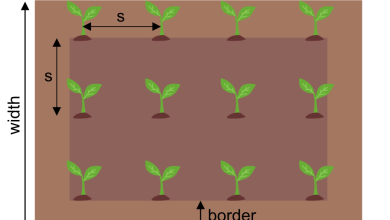Nematodes: What They Are and What Diseases They Cause in the Orchard

Today I will talk about nematodes, microscopic worms that can parasitize the roots of crops and cause diseases in the garden.
We have already seen other times that two of the main problems in garden plants are pests and diseases.Pests are caused by insects, molluscs, birds, animals… (organisms that can be seen with the naked eye). In diseases, however, it is more difficult to detect the cause because they are produced by microorganisms: fungi, bacteria, viruses and, those that we will deal with today, nematodes.

What are nematodes?: Pest or disease
Nematodes are a species of worms that live in water and soil and that, when they are in very large concentrations, parasitize the roots of plants, preventing the normal absorption of water and minerals.

They cannot move much on their own, so they are usually transmitted by irrigation water, contaminated substrates or by tools that have been in contact with affected areas (so be careful! Disinfect everything well if your plants have had diseases caused by nematodes). The larvae enter the plants through the parts that are in contact with the soil (normally the absorbent hairs of the roots) and thus the disease is contracted.
As I have already mentioned, they are very small organisms that cannot be seen with the naked eye, although there are some species that can measure several centimeters, such as Anisakis (I suppose this well-known parasite of some marine species that can also affect people).
What crops do nematodes affect?
They mainly affect «root» crops such as potatoes, beets, carrots, turnips or onions; but they can also affect others such as lettuce, tomato or pepper.
Symptoms of nematodes
The nematodes begin to colonize the roots and the absorption of water and nutrients is difficult. This translates into a decrease in plant growth, wilting, and yellowing of the leaves (until they dry up).
The clearest symptom of the presence of nematodes are nodules on the roots. If you suspect that the disease in your plants has been caused by nematodes, pull them out of the ground and look at the roots. If so, there will be a lot of spherical cysts of different colors and/or deformations (such as thickenings) throughout the root.
You should not confuse these malignant nodules with the nodules that legumes have on the roots (those are good and serve to fix nitrogen and enrich the soil).
Prevent the presence of nematodes in the orchard
First of all, you should try not to get your garden infected. Avoid recirculating irrigation water or water that comes from stagnant places like lakes, and make sure that the substrates and plants that come from seedbeds that are not yours are not infected.
As for many orchard problems, crop rotation is a fairly effective preventive method. Especially when it comes to sensitive crops (tomato, potato, onion, beet…) avoid putting them in the same place two years in a row.
The addition of organic matter through natural fertilizers, such as compost, manure or green manures, helps control soil pathogens.
Some flowers in the garden are good for preventing nematodes, such as marigolds, calendula, chamomile or brown mustard (Brassica juncea) as they produce root secretions that keep them away.

Ecological treatments to eliminate nematodes in the roots
If what you want is an organic garden, as you know, you should not use chemical products or artificial insecticides to eliminate pests and diseases. If that is your case, I am now going to give you some ecological methods to eliminate nematodes.
The first thing you should know is that it is a very difficult microorganism to eradicate (because the eggs can remain dormant in the soil for years), so I recommend that you use preventive methods to avoid its appearance: « Prevention is better than cure «.
Although not all will be eliminated, if you have had nematodes in an area of the garden, try leaving it fallow the following year (especially in the spring-summer season) and remove the soil from time to time. Not having roots to stay in and being exposed to the sun (if you remove the soil you will be taking them outside) will reduce the populations to a minimum.
A very useful technique to eliminate a large part of the nematode population is to put «trap plants». It consists of sowing crops that are susceptible to being attacked by nematodes (Convulvulis, Crotalaria, Cyperus, Portulaca, Anaranthus…), letting them grow until they finish their development and then, when the roots are infected with nematodes, quickly eliminate and destroy them.
I have read that there are some biological nematicide products (that kill nematodes) allowed in organic farming, such as “Fornutri 10” or OMDV. The biological activator «Fire» is also a phytofortifier that can help you regenerate the soil.
Finally, two quite effective soil disinfection methods: solarization and biofumigation.

References
- Asma, M., Al-Assas, K., Dawabah, A. (2016).Prevalence, distribution and intraspecific variation of Heterodera schachtii populations from semiarid environment. Saudi Journal of Biological Sciences, 23(2), 293-299.
- Buena, A., Díez-Rojo, M., López-Pérez, J., Robertson, L., Escuer, M., Bello, A. (2008). Screening of Tagetes patula L. on different populations of Meloidogyne. Crop Protection, 27(1), 96-100.
- M. López-Gómez, E. Flor-Peregrín, M. Talavera, FJ Sorribas, S. Verdejo-Lucas. (2015). Population dynamics of Meloidogyne javanica and its relationship with the leaf chlorophyll content in zucchini, Crop Protection, 70, 8-14.




